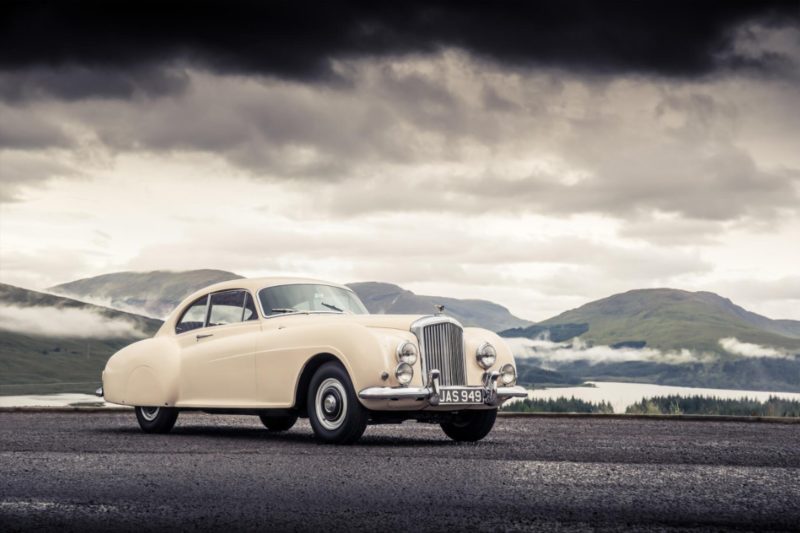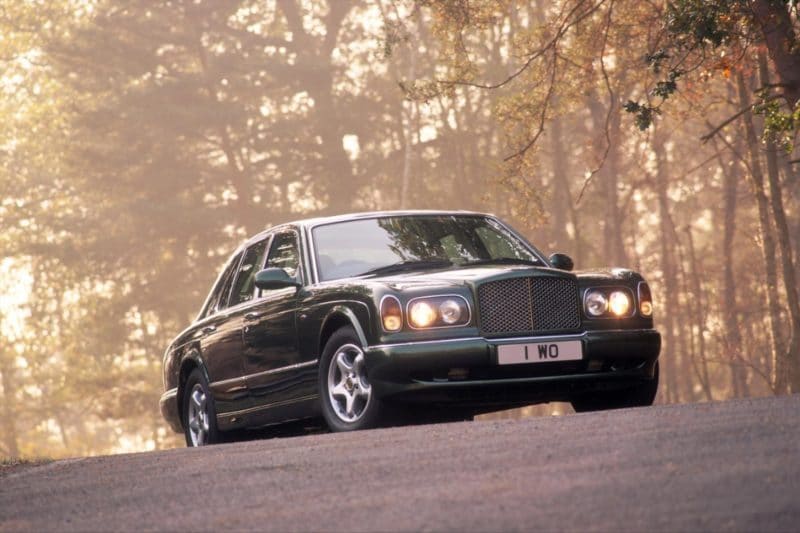Abingdon, Manchester, Longbridge, Oxford, Blackpool, Malvern, Castle Bromwich, Cowley. Just a few names of places where the British car industry was rooted and once had glorious times. Crewe should not be missing in that list of names. This place name symbolizes one of the most exclusive car brands in the world. Pyms Lane Bentleys have been built there for 75 years.
During this period Bentley built nearly 200.000 luxury cars by hand in Crewe. That is 97 percent of the brand's total production. The Bentley history goes back longer than the 75 years mentioned, because Bentley Motors Limited was founded in 1919. It gained fame before World War II with a number of victories in the 24 Hours of Le Mans.
Aircraft engine factory in Crewe ideal new location
Cars were built in Derby for years, but because car production there stopped during the war, Bentley looked for an alternative. Workers had to be retrained in techniques necessary for car production, such as painting, anti-corrosion preparation, body assembly and woodworking. And in Crewe, they found the ideal location to continue car production. That happened in a fairly young Pyms Lane factory, which was built in 1938 for the construction of aircraft engines.
Start in 1946
In May 1946, the period in which Bentley Motors Limited built illustrious and highly exclusive cars began in Crewe. The Mark VI was the first Bentley to be manufactured entirely at the Crewe factory. This was also the first model that Bentley offered as standard with an all-steel body. This one was made at Pressed Steel. What is special is that this Mark VI also marked the close relationship that Bentley had with Rolls-Royce. That connection was logical, because from 1931 to 1970 Bentley Motors Limited was a subsidiary of Rolls-Royce. That took over large parts of the then financially shaky Bentley during the early XNUMXs.
First Bentley from Crewe: Mark VI
So the first product from Crewe was the Mark VI. The 4,3 liter inline six-cylinder engine used by the brand at launch was upgraded in 1951 to a displacement of 4,6 liters and more power. It was also possible at Bentley to have bodywork made on special order. These were highly exclusive and were built by HJ Mulliner & Co. Yet the Mark VI ushered in a new era of serial production for Bentley. In fact, the first Bentley from Crewe became one of the best-selling models of the brand.
Rolls Royce genes
After this, Bentley continued to build cars with strong Rolls-Royce genes for decades in Crewe. The R-Type was the Bentley equivalent of the Silver Dawn, the R-Type Continental was an immensely exclusive coupé. This was followed by the S1. The S2 and S3 followed, meanwhile equipped with the 6.2 Bentley-Rolls-Royce V8 engine. The long-runner then became the T-Series model, the Bentley equivalent of the Rolls-Royce Silver Shadow. Both models debuted in 1965 and continued (in two generations) into 1980.
Vickers
In 1970 things looked bad for the British producer. Mother Rolls-Royce ran into deep financial difficulties as a result of the development of the aircraft engine RB211. That's why Rolls-Royce was nationalized. The car division became a separate operating company, which continued independently under the name Rolls-Royce Motors Limited. That was taken over by Vickers plc in 1980, and Bentley's future was unclear for a while. But the automaker survived and came back. It continued to build Rolls-Royce-inspired cars such as the Mulsanne, Eight and Brooklands for years. Under the auspices of industrialist Vickers, the Rolls-Royce and Bentley models grew somewhat apart in image with the aim of giving Bentley a more sporty image. And Bentley stayed where it had been for years: on Pyms Lane.
Place up to 4.000 employees
The biggest change for Crewe took place in 1998. The Volkswagen Group acquired Bentley that year and made significant investments to modernize the plant. From 2003, Bentley was built and supplied exclusively under the auspices of Volkswagen, after Rolls-Royce moved into a new factory and headquarters in Goodwood under BMW leadership. Pyms Lane remained, and still is, the epic center of Bentley. Pitch Crewe has now grown into a leading factory. It also pays a lot of attention to CO2-friendly production, which is even called CO2-neutral by the manufacturer. Bentley employs 4.000 people in Crewe and currently builds 85 cars a day.












Always get a little itch from language purists. Measure your intelligence by how perfect your language is. Is the same as measuring animals' right to exist by how well they can climb trees. Can we rid the world's seas of all swimming mammals, will the sea level immediately drop 😉
Thought that oldtimer enthusiasts can be found here and not of that language olliebollen.
Ode to the Dutch language purists (is this good Dutch?) Apple vinegar good stuff
Dear Mr Van Putten,
Your articles are judged on layout rather than content. Peculiar development.
Sometimes I type faster than I think… but that's just natural.
I'm going to stand in the corner now.
I now read Rolls-Royce everywhere. Well, almost everywhere… This paragraph title: Rolls-Royce genes and in the Vickers paragraph is Rolls-Royce. And a typo: The long-runner then became the T-Series model, the equivalent of the Rolls-Royce Silver Shadow.
There has never been a Bentley S1 – that was 'just' an S. And just use CO2 instead of CO2.
And this sentence: “May 1946 started in Crewe the period in which Bentley Motors Limited (established in 1931 after the takeover by Rolls-Royce) began to build illustrious and highly exclusive cars.” Read it this way: “May 1946 started in Crewe the period in which Bentley Motors Limited were building illustrious and highly exclusive cars.” Now you see the mistake a little earlier, and that's right: "May 1946 started in Crewe the period in which Bentley Motors Limited (created in 1931 after the takeover by Rolls-Royce) built illustrious and highly exclusive cars."
And another typing: Alinea Vickers starts with Tlen years; you just look over it, but it says 'TLEN' and not ten.
Something with an ant and copulation…
Other than that, nice article!
Nice piece.
But language techniques it went to the printer a little too early. . . .
Dear Nils.
Alright, I've already made some adjustments.
If writing an article is a rush, hire a proofreader.
a still fairly young Pyms Lane factory, which was built in 1938 (singular)
Yet the Mark VI heralded the beginning (word processor abuse)
The first from Crewe became one of the best-selling models (The first)
This was followed by the S1. The S2 and S3 came after, (open door)
Those were also the years that became A Longwalker (word processor abuse)
Sorry for an interesting article
Dear RMLH Stoll.
You are right, there were still imperfections in the article and that is not the intention. The typos have now been corrected. It is of course the intention that the articles are not only interesting, but also pleasant to read. Your assumption of rush work is incorrect, but the follow-up by the undersigned should of course have taken place.
I can't even type it wrong! The article states Rolls Royce….. And that's Yech.
There is too much Rolls-Royce in this article. It's Rolls Royce...